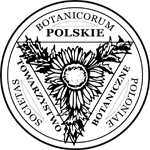Abstract
The experiment was conducted in the Botanical Garden of UMCS in Lublin. A collection of three ecotypes of Allium ursinum L. from Dukla, Roztocze Region and Bieszczady mountain range, were the subject of our study. The aim of the study was to compare the biometrical features and chemical composition of garlic leaves. There were substantial differences both in growth characteristics and flowering characteristics of the ecotypes of Allium ursinum. The Dukla ecotype formed the longest leaves, whereas the shortest ones were found in the Roztocze ecotype. The Bieszczady ecotype was characterized by the widest leaf blades, the longest leaf stalk and flowering stems as well as the largest diameter of inflorescence. The Roztocze ecotype had the largest number of flowers in an inflorescence, while the Dukla ecotype had the shortest flowering stems and the fewest flowers in an inflorescence. The largest concentration of dry mass in leaves was detected in A. ursinum from Roztocze. The largest concentration of proteins was detected in the leaves of A. ursinum from Bieszczady. The most flavonoids were assayed in the leaves of the Roztocze ecotype of A. ursinum, the fewest in the Dukla one. Phenolic acids were at their highest concentration in the leaves of bear's garlic from Dukla, while the lowest concentration was recorded in the leaves of the ecotype from Bieszczady. The garlic leaves from Dukla had also the highest content of essential oil, while the Roztocze ones had the lowest oil content. The ecotypes of Allium ursinum differed substantially when it comes to the number of components of their essential oils and the amount of selected components.
Keywords
Allium ursinum L.; inflorescence; protein; flavonoids; phenyl acids; essential oil






